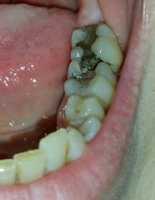
28 Apr Nature vs Nurture? Environment Play a Bigger Role in Dental Cavities
MedicalResearch.com Interview with:
Katrina Scurrah PhD
Senior Research Fellow (Biostatistician), Twins Research Australia, and Melbourne School of Population and Global Health, The University of Melbourne and
Honorary Fellow, Murdoch Childrens Research Institute.
MedicalResearch.com: What is the background for this study?
Response: Oral health is an important component of general health and yet dental caries (decay) is still common in children (affecting up to one in three 5-6 year old children in Australia). Although we know that some genetic and lifestyle factors (such as diet) are important risk factors for caries, the relative importance of these is still unclear. Risk factors from pregnancy and very early childhood (even before teeth appear) might also be important. This study is the first to include prospectively measured data on health and well-being from pregnancy, birth and early childhood in a study of twin children. We analysed data from a cohort of 172 pairs of twin children to assess the effects of genes and environment on susceptibility to dental caries at six years-of-age.
MedicalResearch.com: What are the main findings?
Response: Because identical (monozygous, MZ) twin pairs share all their genes while non-identical (dizygous, DZ) twin pairs share half their genes on average, if there was a strong genetic effect on tooth decay risk we would expect MZ pairs to be much more like each other than DZ pairs because they are genetically more similar. In our study we found that although the overall similarity within twins was quite high, there was no difference in similarity between identical and non-identical twins. This suggests that caries is caused by non-genetic factors that are shared by twins in a pair, and these factors might be maternal pregnancy and pre-pregnancy characteristics, dietary habits or access to fluoridated water. However, genes could still be important in some circumstances, especially for certain patterns of decay, and it might be that their effects are too small for us to detect them in this study.
The other main finding was our identification of several early life factors that are associated with increased risk of caries at six years-of-age, including maternal obesity, defects in tooth enamel quality (decreased mineral content) and lack of exposure to community water fluoridation. Water fluoridation is known to reduce caries risk, and defects in tooth enamel can result in teeth that break down more easily so are more susceptible to decay. However, we could not determine whether maternal obesity directly affects risk of tooth decay, or whether the association is due to dietary and lifestyle or other factors shared within families that affect both obesity and dental caries risk.
MedicalResearch.com: What should readers take away from your report?
Response: Our study suggests that genes may have relatively little influence on the differences in susceptibility to dental caries in six-year old children living in developed countries. The putative risk factors, which are mostly environmental, are therefore potentially modifiable. This helps debunk the idea that individuals are genetically destined to have poor teeth and should drive us to find ways of addressing the risk factors that we know are important for dental health. However, while this was a fairly large study, we would be interested to check these findings in even larger ones, and see whether the findings change at different ages or in different countries.
Based on the findings from all the existing research (including ours), parents and families should focus on practising healthy habits in general – including a diet low in sugar and regular toothbrushing. Ensuring children have early dental check-ups (from 1 year of age) can minimise problems later. Our study also shows that public health initiatives like community water fluoridation continue to be important for prevention of dental caries.
MedicalResearch.com: What recommendations do you have for future research as a result of this work?
Response: Ideally pairs of identical and non-identical twins (or other relative pairs such as siblings) should be included in more dental studies as this enables better separation of the effects of genes and non-genetic factors. The inclusion of carefully and prospectively measured early life data in future longitudinal studies would also be beneficial, as would measurement of additional early life risk factors for dental decay, especially those which are shared between twins in a pair. Repeated measures of dental caries in cohorts (from infancy) would also provide information about changes in caries risk with age. Replication of our results should also be attempted in subsequent and larger studies.
MedicalResearch.com: Is there anything else you would like to add?
Response: Our study illustrates the advantages and continuing importance and relevance of studying twin pairs, both identical and non-identical, to understand more about health conditions that can affect all individuals, as well as the importance of considering the effects of measured early life risk factors in addition to genes. It also illustrates the importance of careful collection and statistical analysis and modelling of data to advance knowledge about health.
We thank the twins and their families for their continued participation in this study.
The authors have no disclosures.
Citation:
Pediatrics April 2019
Genetic and Early-Life Environmental Influences on Dental Caries Risk: A Twin Study
Mihiri J. Silva, Nicky M. Kilpatrick, Jeffrey M. Craig, David J. Manton, Pamela Leong, David P. Burgner, Katrina J. Scurrah
[wysija_form id=”3″]
[last-modified]
The information on MedicalResearch.com is provided for educational purposes only, and is in no way intended to diagnose, cure, or treat any medical or other condition. Always seek the advice of your physician or other qualified health and ask your doctor any questions you may have regarding a medical condition. In addition to all other limitations and disclaimers in this agreement, service provider and its third party providers disclaim any liability or loss in connection with the content provided on this website.
Last Updated on April 28, 2019 by Marie Benz MD FAAD

